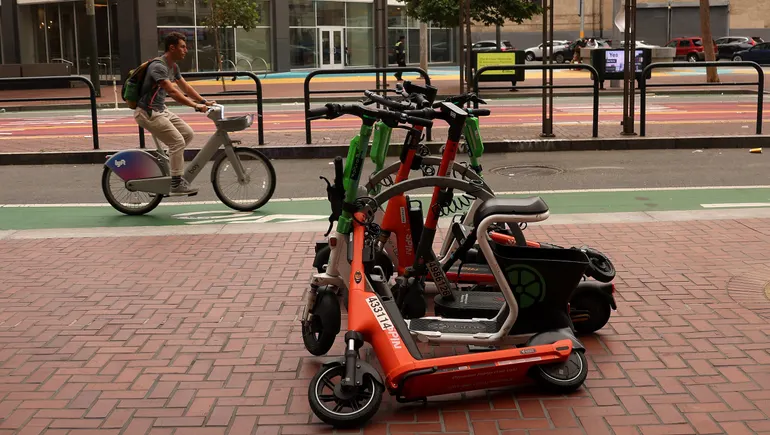Fast Facts
-
Equitable Clean Mobility Focus: California’s current clean transportation strategies, like the Clean Vehicle Rebate Project, often exclude low-income individuals who can’t afford even with subsidies, highlighting a need to rethink “clean mobility” to include everyone.
-
Importance of Light Electric Vehicles (LEVs): LEVs, such as e-bikes and e-scooters, are cheaper and more suitable for urban commuting, making them essential for low-income workers and students lacking reliable transit options.
-
Need for Expanded E-Bike Programs: Programs like the E-Bike Incentive Project show demand for financial assistance in purchasing electric bikes; expanding these to include secondhand e-bikes could further reduce costs and increase accessibility.
- Infrastructure as a Public Good: There’s a call for significant investment in dedicated LEV infrastructure to create a safe, statewide network, transforming light electric transportation from a luxury to a vital public service for equitable green mobility.
Rethinking Clean Mobility
California leads the way in climate action, having invested billions in clean transportation solutions. Nevertheless, a significant gap exists in these efforts. Low-income residents often find themselves sidelined in this push for zero-emission vehicles. For example, the Clean Vehicle Rebate Project offers up to $7,500, yet most electric vehicles (EVs) cost over $50,000. This price tag renders them unattainable for many families lacking reliable transportation options.
Moreover, public transit frequently fails to meet the needs of those who depend on it the most. Buses and trains often lack the reach and reliability needed for everyday commuting. Transitioning to light electric vehicles (LEVs)—such as e-bikes and e-scooters—presents a practical solution. These vehicles cost less to own and operate, making them accessible to low-income workers and students.
Expanding Opportunities for Diverse Residents
Programs like the Driving Clean Assistance Program aim to bridge this gap, offering grants and loans for low-income families. Additionally, the E-Bike Incentive Project provides up to $2,000 for qualifying individuals, highlighting the demand for affordable transportation options. The rapid uptake of e-bike vouchers demonstrates this need, with many being claimed within minutes.
To increase participation, California should expand its incentive projects to include secondhand e-bikes. These affordable alternatives would allow more people to benefit from the program. Furthermore, creating a robust LEV infrastructure, complete with safe and connected routes, will enhance accessibility for all. Major cities already have plans for such infrastructure; now it’s vital that they prioritize and fully implement these strategies.
California possesses the tools to create equitable mobility systems. A shift in mindset from catering to those who already have access to those who don’t can transform transportation. Embracing sustainable micromobility as essential public infrastructure could pave the way for a greener future—one that leaves no resident behind.
Discover More Technology Insights
Dive deeper into the world of Space and its vast mysteries.
Stay inspired by the latest discoveries from NASA.
IoTV1

